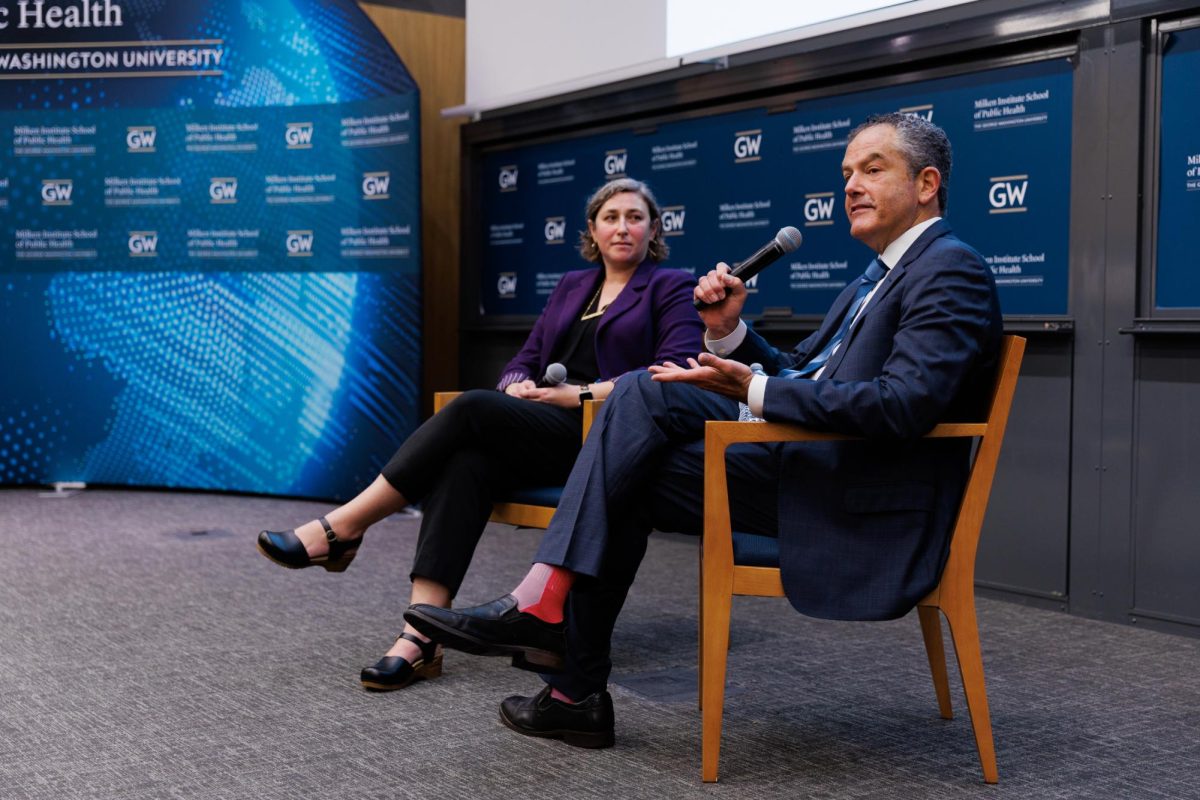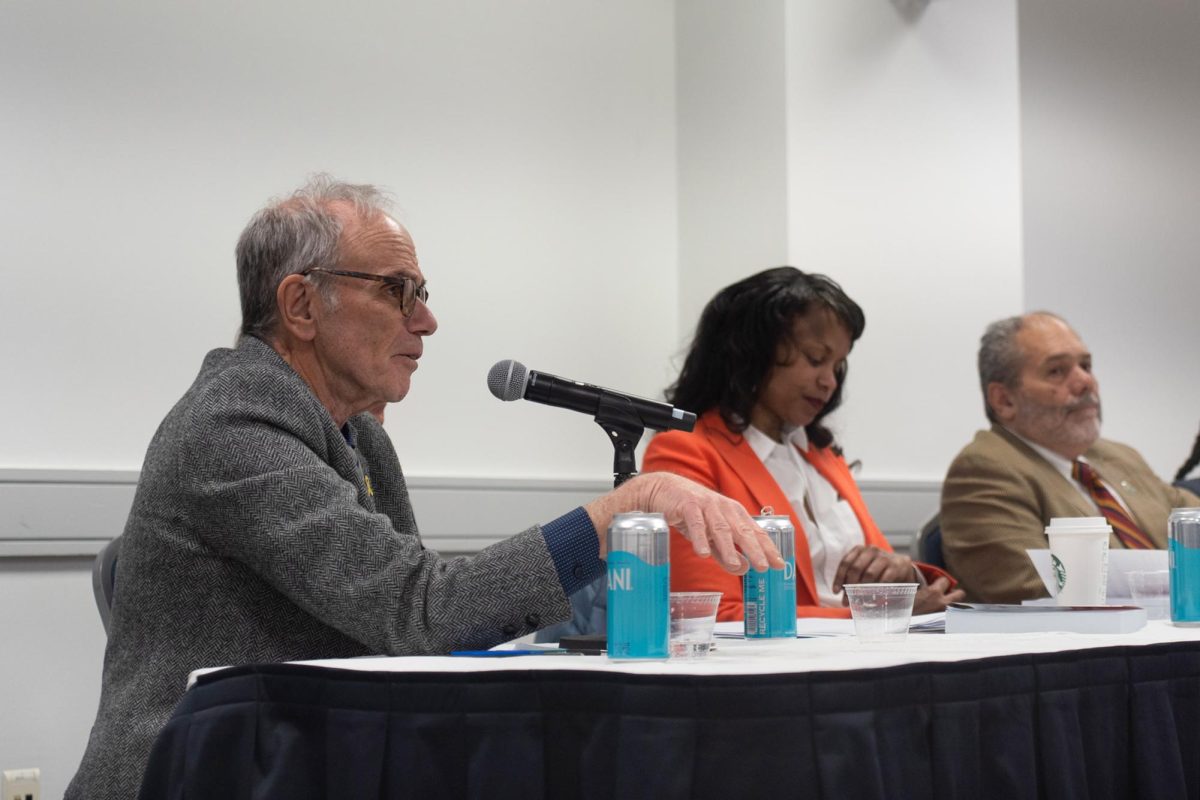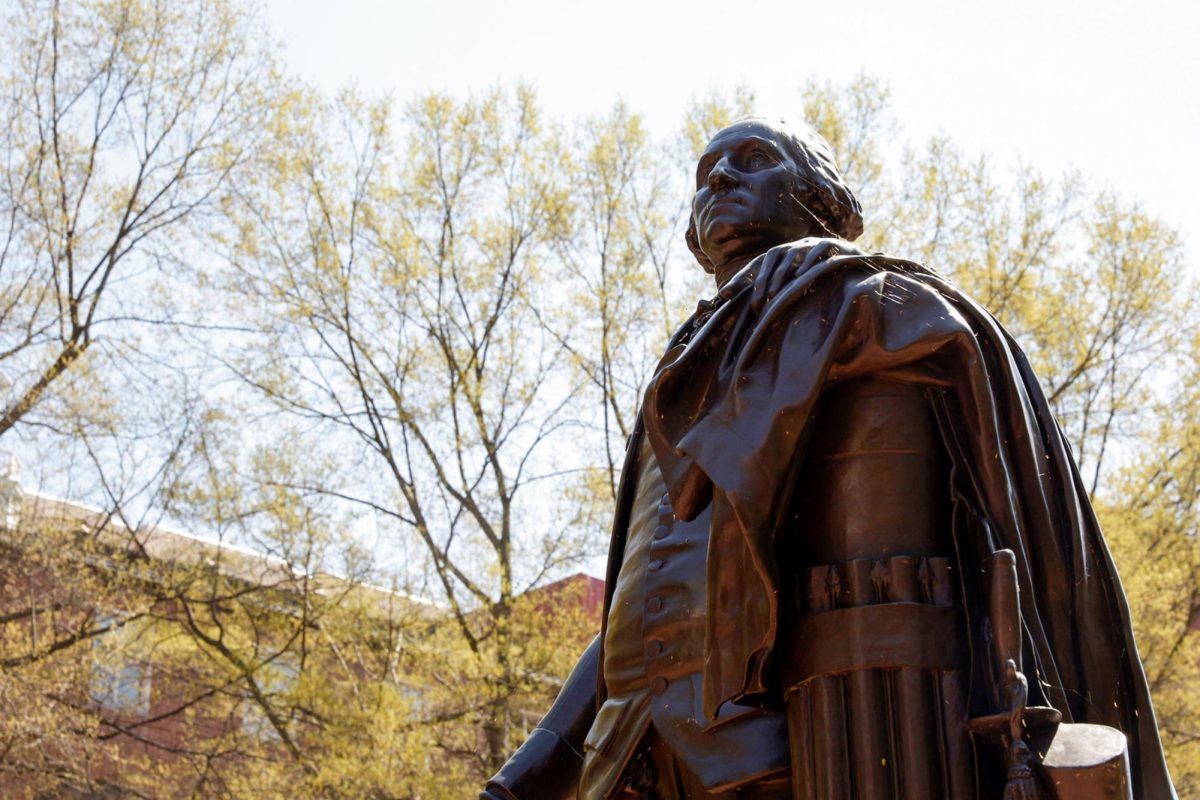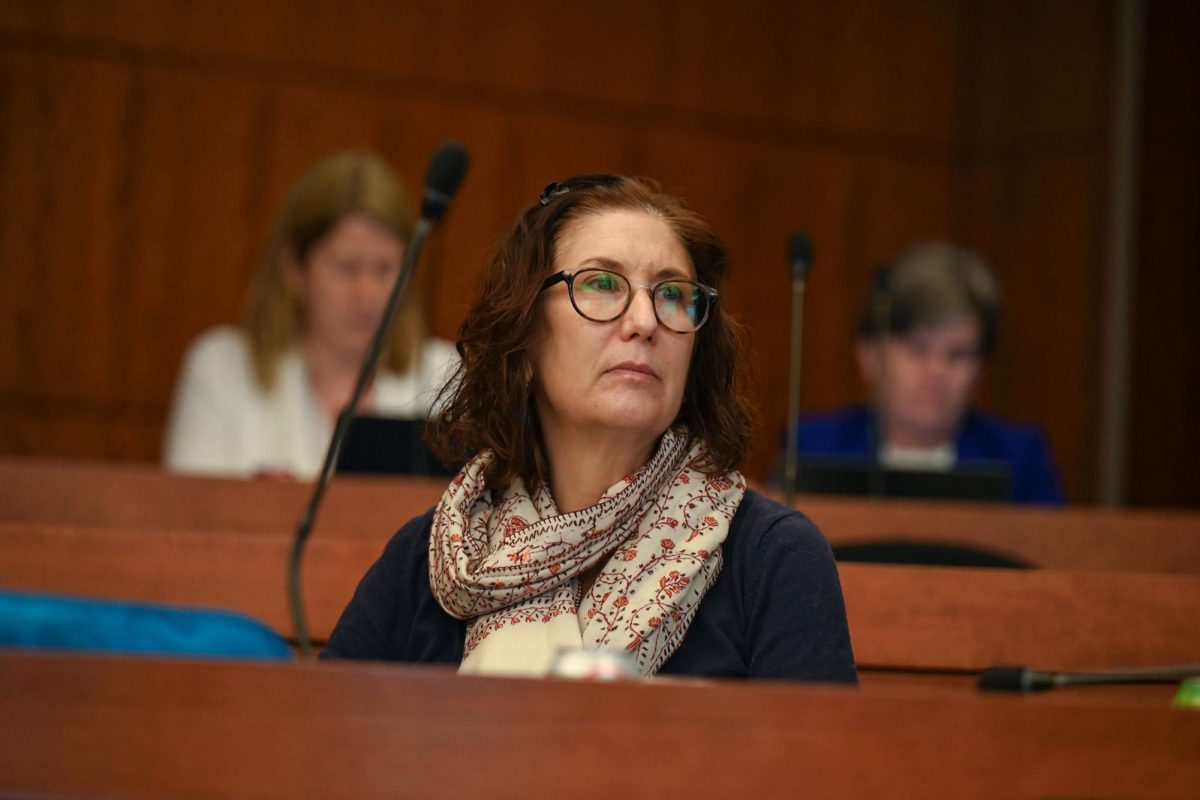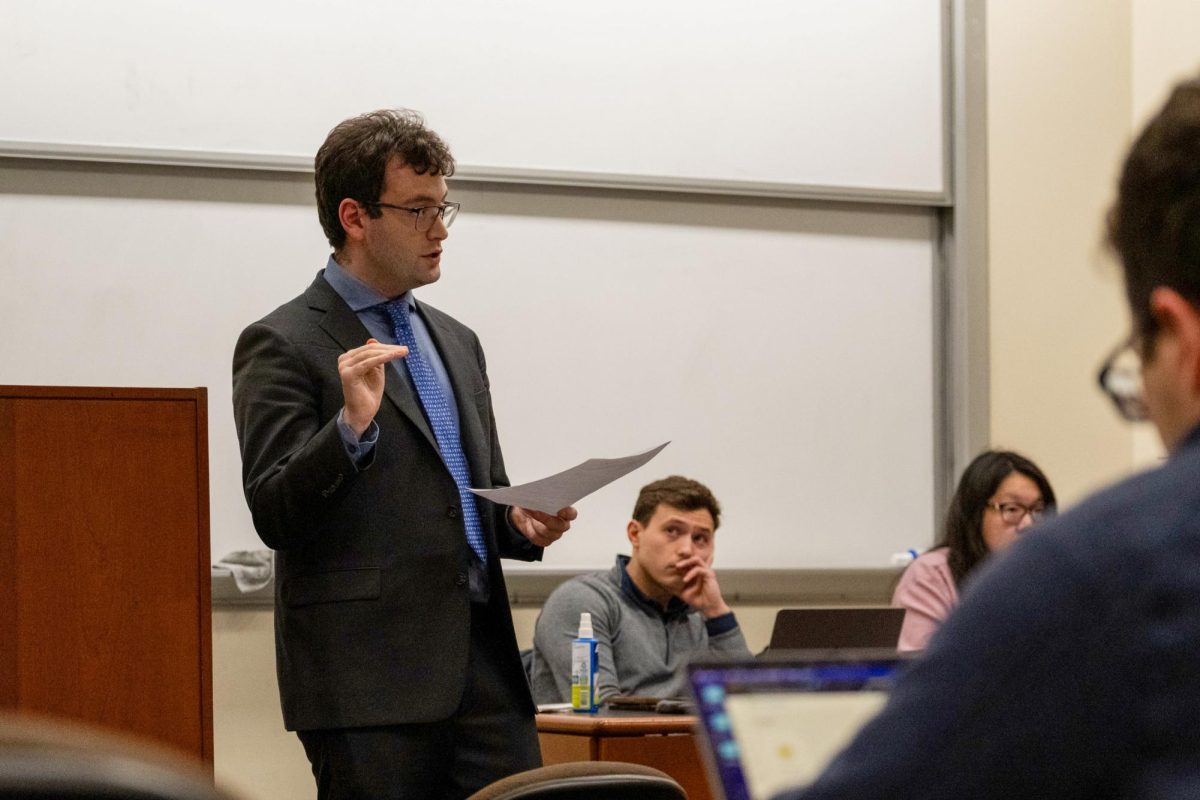A professor of reproductive sciences discussed his research in abortion safety and its impact on past and upcoming Supreme Court rulings on abortion access at the Milken Institute School of Public Health Wednesday.
Dr. Daniel Grossman — who also serves as the vice chair of advocacy in the department of obstetrics, gynecology & reproductive science at the University of California, San Francisco — discussed his research regarding access to safe abortions and its relevance to court cases following the Supreme Court’s 2022 Dobbs v. Jackson decision, which eliminated the constitutional right to abortion. The Milken Institute cosponsored the lecture with the Jacobs Institute of Women’s Health and the Hudson College of Health Sciences at the University of Oklahoma.
Grossman is the 15th speaker to take part in the annual Edward N. Brandt, Jr Memorial Lecture series. Brandt, who passed away in 2007, is commemorated by the series for his national efforts toward improving women’s health as the United States Surgeon General, the United States Assistant Secretary for Health and as an educator at the University of Oklahoma School of Medicine.
Grossman said in the Supreme Court’s June ruling in Alliance from Hippocratic Medicine v. United States FDA, in which anti-abortion clinicians argued against the FDA’s approval of the abortion drug Mifepristone, the judges ruled against the clinicians since they had not personally prescribed the drug to abortion-seeking patients. He said the court should have also used the research-based evidence briefed during the trial in their ruling to further deny the plaintiffs’ claims that medication-induced abortions were unsafe.
“This brief was also cited in the defendant’s briefs, but unfortunately, as I said, the issues of the merits of this case and the relevant evidence was not addressed in the majority ruling,” Grossman said.
Grossman said results from research trials he led — administered by field specialists in the U.S. and internationally in June 2024— show evidence that the effectiveness of Mifepristone and its complementary drug, Misoprostol, is “very high.” He said in a study of 7500 participants, the procedure was 93.5 to 98 percent effective, and less than 0.5 percent experienced serious harm. Grossman said 300 researchers signed onto these conclusions and cited them for the Alliance case, but the trials were not mentioned in the justice’s final rule.
Grossman said in the combined cases of Moyle and Idaho v. United States, the Supreme Court was to decide if the Emergency Medical Treatment and Active Labor Act (EMLATA) could override Idaho’s abortion laws in the event of a life-threatening scenario. The EMLATA requires emergency rooms to provide emergency care to patients regardless of ability to pay.
He said the Supreme Court sent the case back to the lower courts, as the justices decided the case needed more deliberation at the appellate level before a Supreme Court ruling. Grossman said the case will likely return to SCOTUS next term, and he hopes qualitative research he conducted can impact the case’s verdict.
Grossman said his research aims to describe a range of harmful scenarios obstetricians experience in caring for their patients during the second trimester of pregnancy. He said when complications arise in that stage, medical abortions can be performed as an act of emergency care. He said that his research included physicians who felt their “hands were tied” and patients who were scared of the consequences of receiving an abortion, even if it saved their life.
“After this harrowing experience, the patient expressed fear that she had broken the law by ending her pregnancy,” Grossman said. “The physician wrote ‘She asks me if she or I could go to jail for this, or did this count as life-threatening.’”
Grossman said the data he presented testifying as an expert in the 2016 Whole Woman’s Health v. Hellerstedt case, which challenged the provisions of the six-week abortion ban in Texas at the time, overturned Texas’ legislation. He said the Texas policy evaluation he conducted revealed that the abortion ban reduced the number of abortion clinics by more than half of those previously in operation, and the existing ambulatory surgery centers were limited in their capacity to expand their services and accommodate for the lack of clinics.
Grossman said because of the data produced, the court found abortion requirements in Texas to be unconstitutional. He said they also referred to separate research and studies about the general safety of abortion, weighing the benefits against the harms of access to care. Grossman said though we’re in a “different place” today, and we have a different Supreme Court, there still needs to be a commitment to valuing research.
“There is a critical role for us as clinicians and researchers to try and ensure that scientific evidence is considered by judges in legal cases,” Grossman said. “I look forward to a day when the courts are held to a higher standard regarding the type of research evidence that they must consider.”


